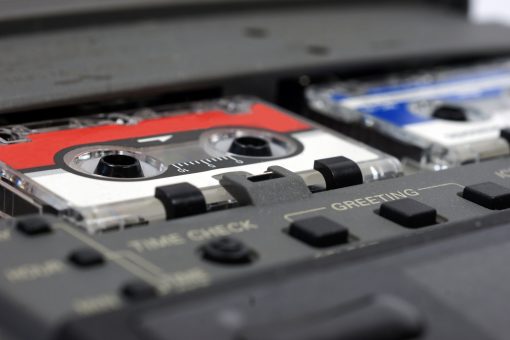“My bruddas don’t dab, we just Vossi bop
I tell your girl to link me at the coffee shop” Stormzy, 2019
Research Interviews and the Coffee Shop
We had an email this week from a researcher looking for the transcription of some academic research recordings she had recently undertaken. In her email she referred to the fact that some of the recordings had been undertaken in the ‘obligatory coffee shop’.
We inwardly groaned when we read this. Although we have been transcribing for almost 20 years and have a group of transcribers working with us who probably have over 100 years of collective transcription experience, there is very little worse for completing a transcription than a research recording from a coffee shop.
Vacuum Cleaners and Coffee Shops
The next time you are in a coffee shop just stop for a minute and listen to the level of noise. Whether you are say in Costa Coffee, Starbucks or (preferably) an independent barista, you will notice that there is a continual hum of background noise. Even in a half full coffee shop the noise levels can be so high that most of the people sat drinking their coffee will need to virtually shout to each other in order to get heard. Because they are shouting in order to get heard, everyone else in the coffee shop will be shouting as well.
According to Trevor Cox, a professor at the University of Salford (acoustic and audio engineering) the dB level (measure of noise) is around 70dB in a noisy cafe or restaurant. This is the level of noise you would need to raise your voice to hold a conversation at.
To put this into context, if you stand 1 metre away from a vacuum cleaner, you would get the same level of noise (70dB). A chainsaw from 1 metre away is 110dB and conversational speech from 1 metre away is 60dB (see http://www.sengpielaudio.com/TableOfSoundPressureLevels.htm).
Added Sound Effects
Add in the noise of the coffee machine and the preparation of the individual drinks, together with a thudding sound as the coffee filters are lifted up and down, loud noise emitted from the milk frother (not sure of the technical term!), the noise of the toasting machines, beeps from the various pieces of equipment at the back of the coffee counter and generally lots and lots of background noise.
All of this contributes to rather a lot of background noise on the audio recording!
Pubs can be quieter
Sometimes we have listened to recordings and wondered if the researcher would have been better going round the corner and sitting in a pub to complete their recording, because it seems coffee shops have turned into the new pubs when it comes to places of discourse. Pubs during the day tend to be quite quiet and if you can find a reasonable spot in the corner then the acoustics are not going to be bad at all. The acoustics in coffee shops tend to be very echoey, with sound bouncing off painted brick walls. This can also give the room a booming effect as well as the extensive background noise.
Advice
So our advice
to any researcher thinking about a location to complete a recording is that
although you may well be able to hear the person sat on the other side of the
table to you extremely clearly, it is possible the transcriber will really have
to work hard to complete the transcription of your recording. Think about the
background noise, the noise of the machines, business of the location, the
state of the walls in terms of echo levels, and think again if you really
cannot undertake the recording someplace else.
Coffee shops really are one of the worst places to undertake a recording if you want an accurate transcription of any conversation or interview.
Six Top Tips for Recording in Coffee Shops
If you have to use a coffee shop consider the following tips:
- Sit as far away as possible from the door and the coffee machines.
- Look for a corner, preferably with soft furnishings somewhere close by.
- Find a location where not too many people are very close to you.
- Sitting in the area where most people are on their own can be a very good way of avoiding excess amounts of conversation noise.
- Try to keep both the interview subject and yourself as close as possible to the microphone on your recorder or phone.
- Avoid sofas – people tend to lean back too much.









